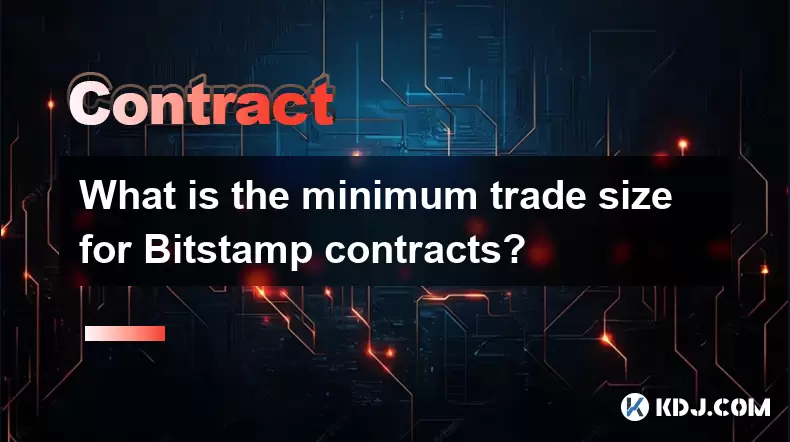-
 Bitcoin
Bitcoin $118600
-1.19% -
 Ethereum
Ethereum $3633
-2.99% -
 XRP
XRP $3.191
-10.14% -
 Tether USDt
Tether USDt $1.000
0.01% -
 BNB
BNB $776.1
-1.34% -
 Solana
Solana $189.7
-7.51% -
 USDC
USDC $0.0000
0.02% -
 Dogecoin
Dogecoin $0.2413
-10.49% -
 TRON
TRON $0.3099
-1.92% -
 Cardano
Cardano $0.8182
-9.31% -
 Hyperliquid
Hyperliquid $43.77
-4.82% -
 Stellar
Stellar $0.4286
-9.27% -
 Sui
Sui $3.717
-7.35% -
 Chainlink
Chainlink $18.22
-7.31% -
 Hedera
Hedera $0.2465
-9.91% -
 Bitcoin Cash
Bitcoin Cash $512.4
-2.64% -
 Avalanche
Avalanche $23.98
-6.82% -
 Litecoin
Litecoin $112.5
-5.53% -
 UNUS SED LEO
UNUS SED LEO $8.969
-0.24% -
 Shiba Inu
Shiba Inu $0.00001388
-10.11% -
 Toncoin
Toncoin $3.194
-4.31% -
 Ethena USDe
Ethena USDe $1.001
0.00% -
 Polkadot
Polkadot $4.128
-8.96% -
 Uniswap
Uniswap $10.19
-5.28% -
 Monero
Monero $313.7
-2.80% -
 Bitget Token
Bitget Token $4.712
-2.96% -
 Dai
Dai $0.0000
0.01% -
 Pepe
Pepe $0.00001275
-9.75% -
 Aave
Aave $291.4
-6.25% -
 Bittensor
Bittensor $426.7
-5.38%
How to hedge with KuCoin Futures?
Hedging on KuCoin Futures involves opening a short position matching your spot crypto holdings to offset price drop risks—ideal for protecting BTC or ETH without selling.
Jul 23, 2025 at 11:00 pm

Understanding Futures Contracts on KuCoin
Futures contracts on KuCoin allow traders to speculate on the future price of cryptocurrencies like Bitcoin or Ethereum without owning the underlying asset. These contracts are standardized agreements to buy or sell an asset at a predetermined price at a specific time. For hedging, the goal is not to profit from price movements but to reduce the risk of adverse price changes in an existing position. When you hold actual crypto assets—like BTC in your wallet—you can open a short position in KuCoin Futures to offset potential losses if the market drops.
Setting Up Your KuCoin Futures Account
Before hedging, ensure your KuCoin Futures account is active:
- Log in to your KuCoin account and navigate to the "Futures" tab.
- Complete identity verification if not already done—this is required for leverage trading.
- Deposit funds into your Futures wallet via the "Transfer" option from your Spot wallet.
- Choose the correct margin mode: Isolated Margin gives you precise control over each position’s risk, which is ideal for hedging. Avoid Cross Margin unless you fully understand its implications.
Choosing the Right Futures Contract
KuCoin offers multiple futures types: - Perpetual contracts: No expiry date, funded by periodic payments between long and short holders.
- Delivery contracts: Expire on a set date, settled in the underlying asset.
For hedging, perpetual futures are more practical because they don’t require rebalancing at expiry. Match the contract symbol exactly to your spot holding—for example, if you own BTC, hedge with the BTC/USDT perpetual contract.Opening a Hedge Position: Step-by-Step
Assume you hold 1 BTC valued at $60,000 and want to hedge against a price drop: - Go to the BTC/USDT perpetual futures market.
- Select "Short" as your position direction.
- Enter the quantity: 1 BTC worth of contracts (e.g., 1 contract if 1 contract = 1 BTC).
- Set leverage: 1x or 2x is safer for hedging—high leverage increases liquidation risk.
- Choose order type: Use Limit Order to control entry price or Market Order for immediate execution.
- Confirm the trade in the pop-up window. Your short position is now live and offsets your spot BTC exposure.
Monitoring and Adjusting the Hedge
Hedging isn’t a “set and forget” strategy. You must actively manage it: - Track your Mark Price and Liquidation Price in the Positions tab—ensure price movement won’t trigger liquidation.
- If BTC price drops, your short futures gain value while your spot BTC loses value—net effect is minimal loss.
- If BTC price rises, your spot gains while futures lose—again, the net is stable.
- Rebalance if you sell part of your spot BTC: reduce the futures short position proportionally to avoid over-hedging.
- Watch for funding rates in perpetual contracts—they can erode profits over time if held long-term.
Exiting the Hedge Correctly
To close the hedge: - Return to the Futures trading interface.
- Locate your open short position in the Positions tab.
- Click "Close" or place a market buy order for the same quantity as your short.
- Confirm the trade—this liquidates the futures position.
- Your spot BTC is now unhedged and exposed to market movements again.
- Always close the futures position before selling your spot BTC unless you intend to remain short.
Common Mistakes to Avoid
- Over-leveraging: Using 10x or higher leverage for hedging can lead to early liquidation even with small price swings.
- Ignoring funding fees: In perpetual contracts, long positions pay short positions every 8 hours. If you’re short, you earn funding—but if the market shifts, this can reverse.
- Mismatched assets: Hedging ETH with BTC futures won’t work—you must hedge each asset with its corresponding futures contract.
- Forgetting margin requirements: Even with 1x leverage, you need enough margin to cover potential losses—check your Maintenance Margin level.
Frequently Asked Questions
Can I hedge using KuCoin Futures without holding the actual crypto?
No, hedging implies you already own the asset you’re protecting. Opening a futures position without spot exposure is speculation, not hedging. KuCoin allows this, but it carries directional risk unrelated to hedging.What happens if my hedge position gets liquidated?
If your short futures position is liquidated due to a sharp price rise, you lose the margin allocated to that trade. Your spot holdings remain, but now they’re fully exposed to downside risk—this defeats the purpose of hedging.Do I need to pay fees when hedging on KuCoin Futures?
Yes. KuCoin charges taker and maker fees for opening and closing positions. Taker fees are slightly higher (e.g., 0.06%) and apply to market orders. Maker fees (e.g., 0.02%) apply to limit orders that add liquidity. These fees reduce net gains from successful hedges.How do I check if my hedge is working properly?
Monitor both your Spot and Futures tabs in real time. If BTC drops 5%, your spot BTC value should fall 5%, but your short futures should gain ~5% in value (minus fees). The combined value should remain nearly unchanged—this confirms the hedge is functioning.
Disclaimer:info@kdj.com
The information provided is not trading advice. kdj.com does not assume any responsibility for any investments made based on the information provided in this article. Cryptocurrencies are highly volatile and it is highly recommended that you invest with caution after thorough research!
If you believe that the content used on this website infringes your copyright, please contact us immediately (info@kdj.com) and we will delete it promptly.
- Score Big This Season with the BetMGM Bonus Code: Your Ticket to MLB Bonus Bets!
- 2025-07-24 06:50:12
- Bitcoin: From Digital Gold Rush to Evolving Asset Class
- 2025-07-24 06:50:12
- Bitcoin, Lightning Network, and Block Inc.: A New York Minute on Crypto's Mainstream Moment
- 2025-07-24 07:10:12
- PUMP Token: No Airdrop, But What's the Plan?
- 2025-07-24 07:10:12
- Asymmetric Shifts, Investor Losses, and Bold Strategies in Crypto: A New Era?
- 2025-07-24 07:15:12
- Crypto Trading 2025: AI Analytics, Binance Fees, and the Rise of Utility Tokens
- 2025-07-24 07:15:12
Related knowledge

Why is my Bitstamp futures position being liquidated?
Jul 23,2025 at 11:08am
Understanding Futures Liquidation on BitstampFutures trading on Bitstamp involves borrowing funds to open leveraged positions, which amplifies both po...

Does Bitstamp offer inverse contracts?
Jul 23,2025 at 01:28pm
Understanding Inverse Contracts in Cryptocurrency TradingIn the realm of cryptocurrency derivatives, inverse contracts are a specific type of futures ...

How to find your Bitstamp futures trade history?
Jul 23,2025 at 08:07am
Understanding Bitstamp and Futures Trading AvailabilityAs of the current state of Bitstamp’s service offerings, it is critical to clarify that Bitstam...

Can I use a trailing stop on Bitstamp futures?
Jul 23,2025 at 01:42pm
Understanding Trailing Stops in Cryptocurrency TradingA trailing stop is a dynamic type of stop-loss order that adjusts automatically as the price of ...

What is the minimum trade size for Bitstamp contracts?
Jul 23,2025 at 07:14pm
Understanding Bitstamp and Its Contract OfferingsBitstamp is one of the longest-standing cryptocurrency exchanges, established in 2011, and known for ...

How to trade ETH perpetuals on Bitstamp?
Jul 23,2025 at 03:28am
Understanding ETH Perpetual ContractsETH perpetual contracts are derivative products that allow traders to speculate on the price of Ethereum without ...

Why is my Bitstamp futures position being liquidated?
Jul 23,2025 at 11:08am
Understanding Futures Liquidation on BitstampFutures trading on Bitstamp involves borrowing funds to open leveraged positions, which amplifies both po...

Does Bitstamp offer inverse contracts?
Jul 23,2025 at 01:28pm
Understanding Inverse Contracts in Cryptocurrency TradingIn the realm of cryptocurrency derivatives, inverse contracts are a specific type of futures ...

How to find your Bitstamp futures trade history?
Jul 23,2025 at 08:07am
Understanding Bitstamp and Futures Trading AvailabilityAs of the current state of Bitstamp’s service offerings, it is critical to clarify that Bitstam...

Can I use a trailing stop on Bitstamp futures?
Jul 23,2025 at 01:42pm
Understanding Trailing Stops in Cryptocurrency TradingA trailing stop is a dynamic type of stop-loss order that adjusts automatically as the price of ...

What is the minimum trade size for Bitstamp contracts?
Jul 23,2025 at 07:14pm
Understanding Bitstamp and Its Contract OfferingsBitstamp is one of the longest-standing cryptocurrency exchanges, established in 2011, and known for ...

How to trade ETH perpetuals on Bitstamp?
Jul 23,2025 at 03:28am
Understanding ETH Perpetual ContractsETH perpetual contracts are derivative products that allow traders to speculate on the price of Ethereum without ...
See all articles

























































































